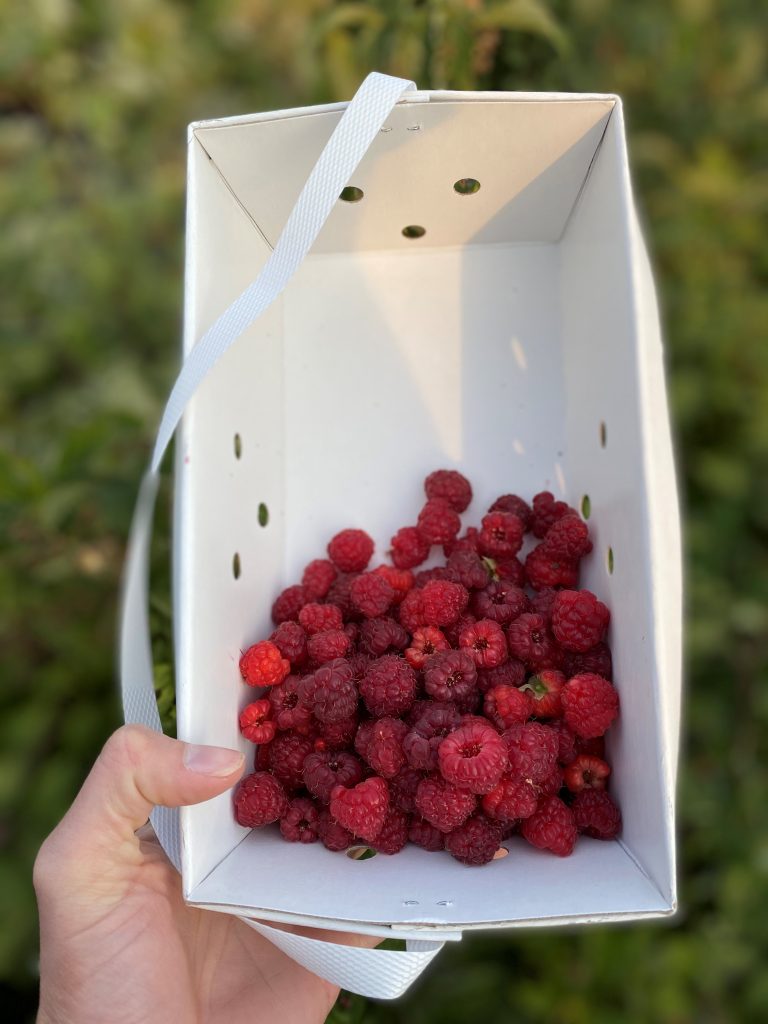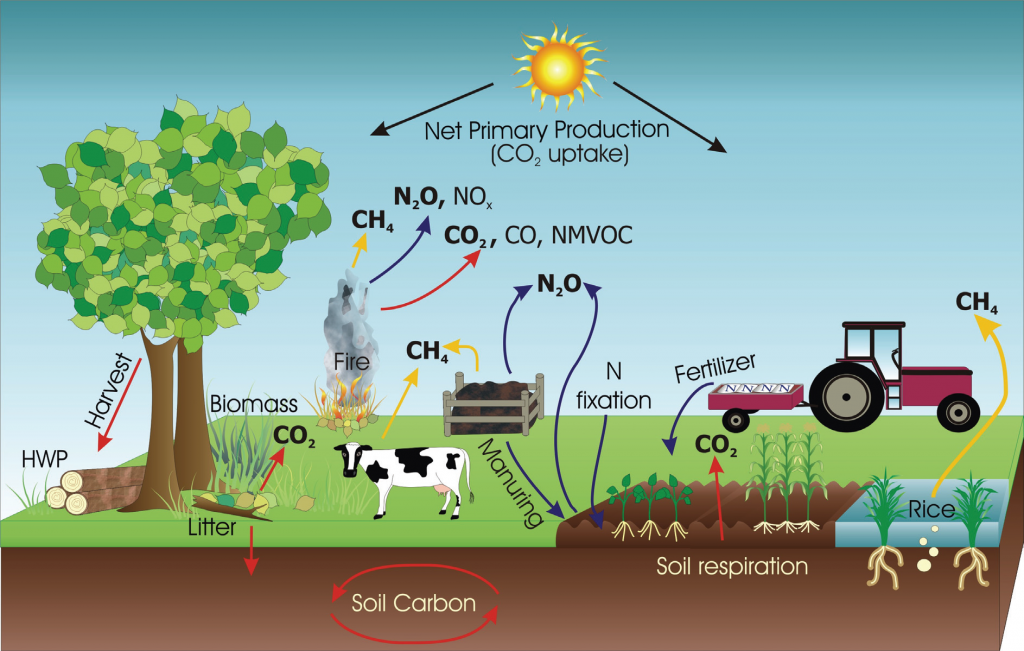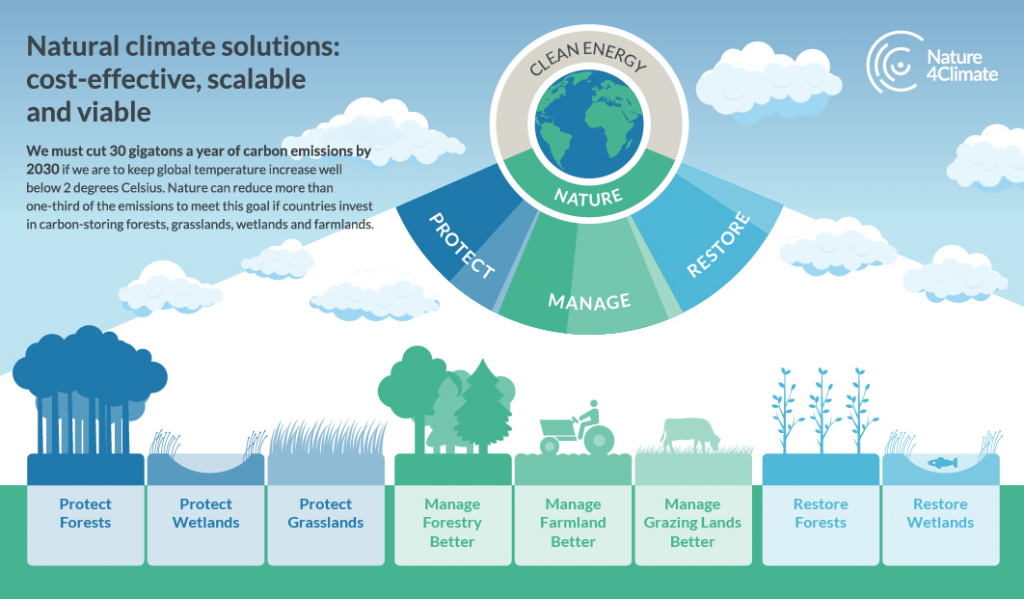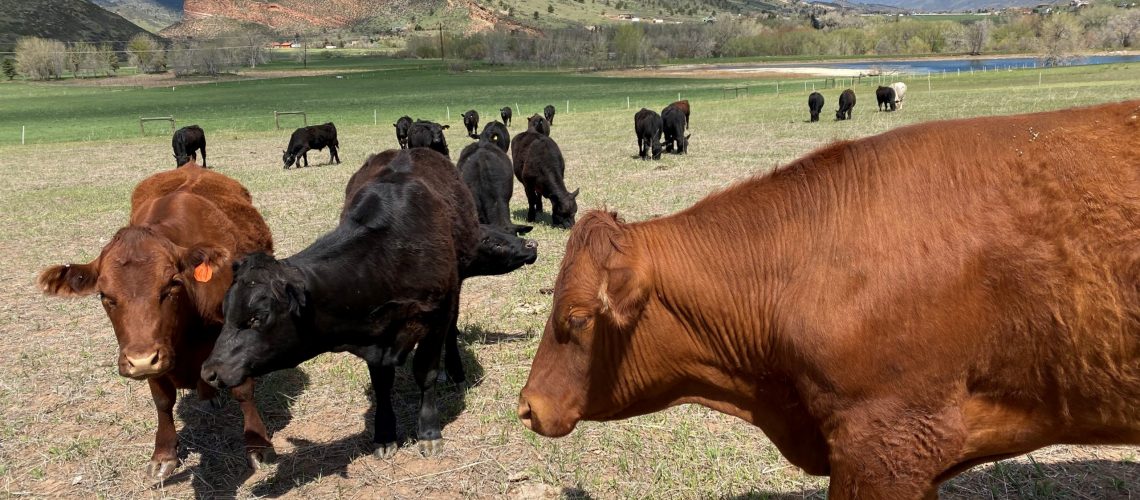Guest Post By Shelby McClelland, 2020-2021 Sustainability Leadership Fellow and Ph.D. Candidate in the Department of Soil and Crop Sciences and Graduate Degree Program in Ecology
The foodie’s dilemma
There is no debate about it: I am a foodie through and through. My love for food and agriculture is undoubtedly a result of my upbringing on a small ranch in northern California. You name it, we raised it – rabbits, poultry, dairy and meat goats, hogs, and beef cattle. From the time I was five years old I was traveling all over the state and country to exhibit my animals. I participated in both 4-H and the Future Farmers of America (FFA), which I credit with developing my drive, passion, and interest as a scientist in the food and agriculture sector. Whether making fresh cheese on a dairy goat farm in France or learning about cassava production in central Africa, I always circle back to my experiences growing up and the humility I feel when reflecting on the stewardship and commitment of producers to our working lands.

However, at its core, our current agricultural production system is not sustainable for our ecosystems or for the people who work tirelessly to get food on our plates. Historical mismanagement of our soils, an emphasis on short-term profits over long-term ecosystem health, and apathy towards where our food comes from and how it is made continues to perpetuate a broken system that already fails many. Eventually, this approach to global food production will fail us all. We need a fundamental shift in how we produce and think about our food to create a more equitable and just system for people and the planet.
Agriculture’s global environmental footprint
The agriculture sector is responsible for 23% of net global greenhouse gas emissions. Land-use and land-use change are the primary sources of carbon dioxide emissions in the sector, but the production of ruminant livestock and the application of nitrogen fertilizers to soils produce two other potent greenhouse gases: methane (CH4) and nitrous oxide (N2O), respectively. Methane is 28 times more powerful than CO2 at trapping warming in our atmosphere over one-hundred years, and nitrous oxide is even more potent – 265 times more powerful than CO2. In fact, global agriculture produces 44% of anthropogenic (or human-caused) CH4 emissions and 81% of N2O emissions. But agriculture is uniquely positioned to help address the climate crisis. Improved soil management practices more broadly referred to as ‘natural climate solutions’ can help drawdown carbon out of the atmosphere and reduce agricultural emissions of N2O and CH4. These practices include the planting of cover crops and conservation tillage to increase and maintain carbon in soils.

But agriculture impacts our planet through more than just climate; it is also one of the leading causes of biodiversity loss and water and air pollution. Furthermore, the way we currently produce our food harms minoritized and marginalized communities not to mention the well-being of billions of animals we raise annually for consumption.
Complex problems require thoughtful solutions
When we are presented with a problem, we naturally want a simple fix – a silver bullet that will take care of all our problems. But our world’s wicked problems cannot be solved with one solution. The challenges facing agriculture are no different. Efforts to move toward entirely organic production or strictly plant-based diets are compelling from a climate perspective, but risk alienating key partners, and, moreover, face numerous barriers to wider adoption, and may not always be desirable to apply universally to all agricultural production systems. We cannot afford to leave any potential solutions off the table, but we also need to be careful about overstating the benefits of any one solution.
Simply put, there is no-one-size-fits-all solution; an agricultural practice that works in one location may not provide the same benefits in another. Take cover cropping for example; recent research indicates that cover crops are promising way to increase soil carbon sequestration on croplands. However, cover cropping may be less effective in cooler, drier temperate climates where plant growth is limited during parts of the year relative to warmer, wetter regions. This is particularly true in Colorado, where cover crop production presents numerous challenges due to water limitations potentially jeopardizing the provisioning ecosystem services these systems provide. Other soil health management practices, like conservation crop rotation or no-till, may provide greater climate benefits in these regions with introducing adverse tradeoffs.
While the urgency to act on the climate crisis cannot be understated, any options put forth as natural climate solutions must not lead to negative impacts for biodiversity or ecosystem function. In my own research of livestock life cycle assessment (LCA), a method to assess the full environmental footprint of a product, most studies focus on few environmental impact categories making it difficult to ascertain the full scope of impact. Biodiversity is notoriously complex to include in a LCA framework, but new guidance released by the Food and Agriculture Organization of the Unite Nations Livestock Environmental Assessment Performance Partnership (LEAP) offers utility to practitioners to better incorporate biodiversity impacts into LCA.
We need everyone at the table
To solve complex problems, we need thought leaders and action-takers across the public and private sectors tackling these challenges from a diversity of perspectives. The COMET-Farm and COMET-Planner tools developed by Colorado State University Natural Resource Ecology Lab – in collaboration with USDA NRCS – help quantify how improved soil management practices can reduce agriculture’s environmental impact at the farm-scale. Non-profit organizations, like American Farmland Trust, are helping to expand the reach of COMET-Planner by merging it with AgCensus data in a powerful data visualization format called the Carbon Reduction Potential Evaluation (CaRPE) tool. Decision-makers at the state, regional, and national level can leverage CaRPE to evaluate the climate benefits of improved soil management practices in croplands and grazing lands, supporting efforts at these scales to achieve climate neutrality goals. In the private sector, corporations like General Mills are leading the way on expanding regenerative agriculture and soil health practices in their supply chain to help producers combat and be resilient to climate change. And, all of us can help shape a more resilient and sustainable agriculture future through the choices we make about what we put on our plates and what we throw out.

The time to act is now
To keep projected global warming at or well-below the 2°C level, we need a combination of a rapid reductions in CO2 emissions, significant cuts in non-CO2 trace gases (e.g., CH4, N2O), and removal of CO2 from the atmosphere. Meeting this target will be a feat, but not impossible. National and global analyses to inspire action and wider adoption of NCS and shifts in how we produce our food can help us communicate the urgency of the climate crisis, but these approaches are just one tool in our toolbox. We need to move away from blanket prescriptive approaches for a more holistic agricultural system, and towards identifying solutions that meet local sustainability, socio-economic, and cultural goals. Rather than endlessly debating over semantics, our energy in the agricultural research community should go towards moving the needle on key issues in this space like monitoring, reporting, and verification. To rise to the challenge of climate-neutral agriculture, stakeholders across the agricultural sector must work together to find relevant, robust, and scientifically-sound management practices in recognition of environmental and social complexities at local scales.






